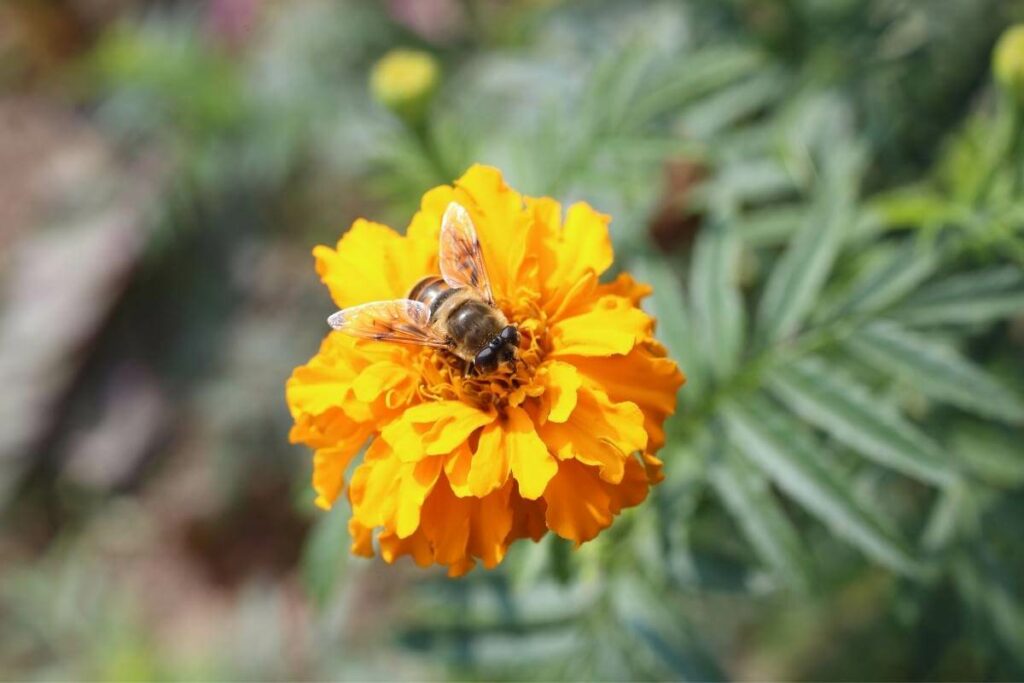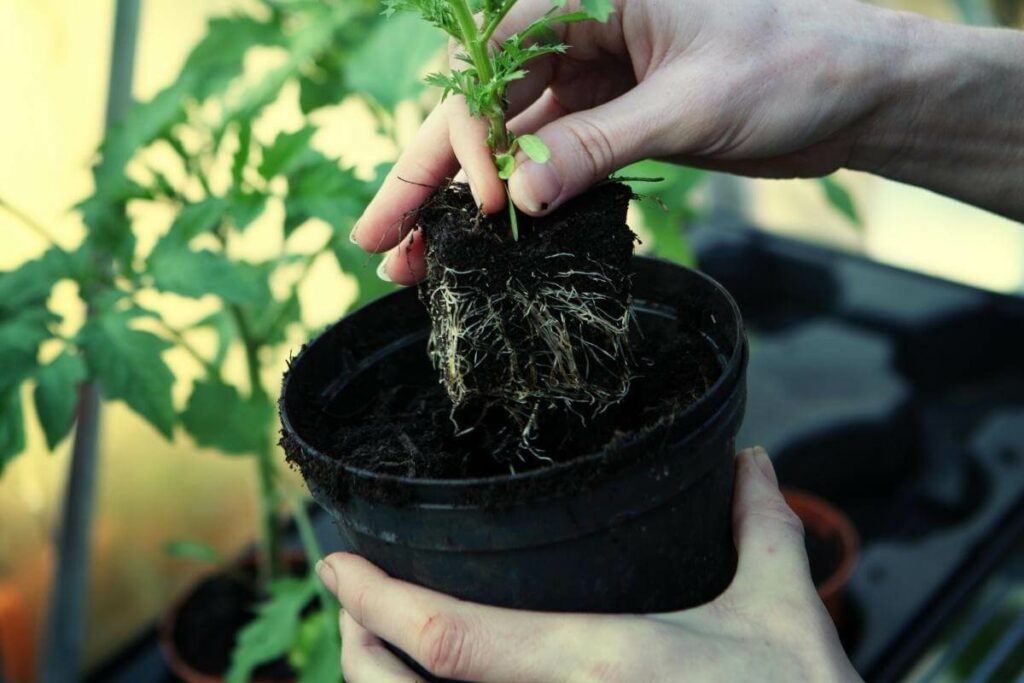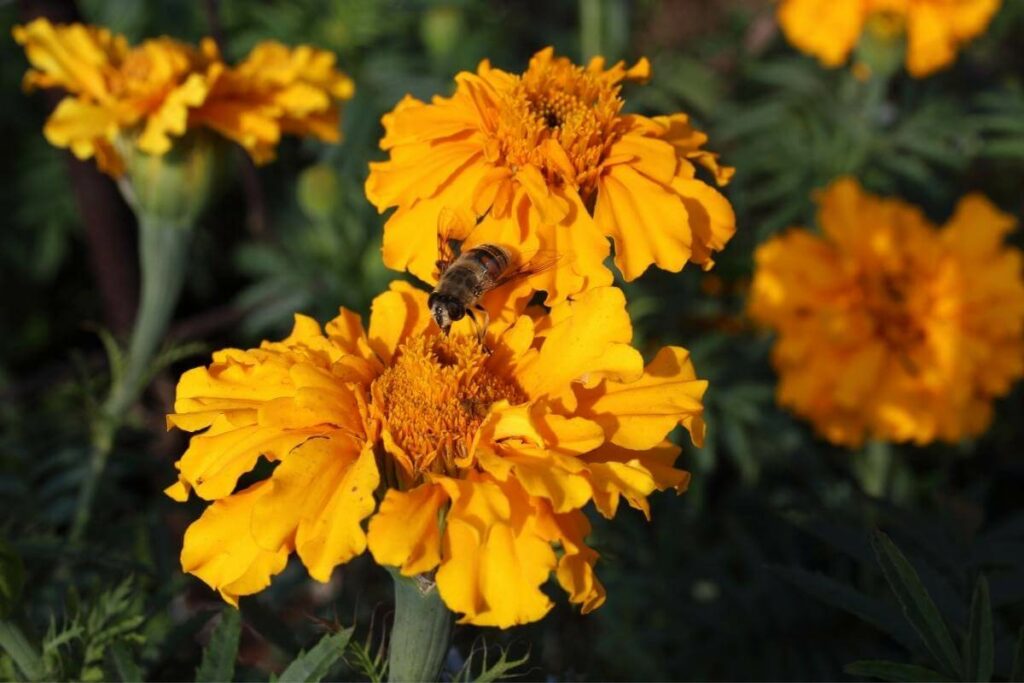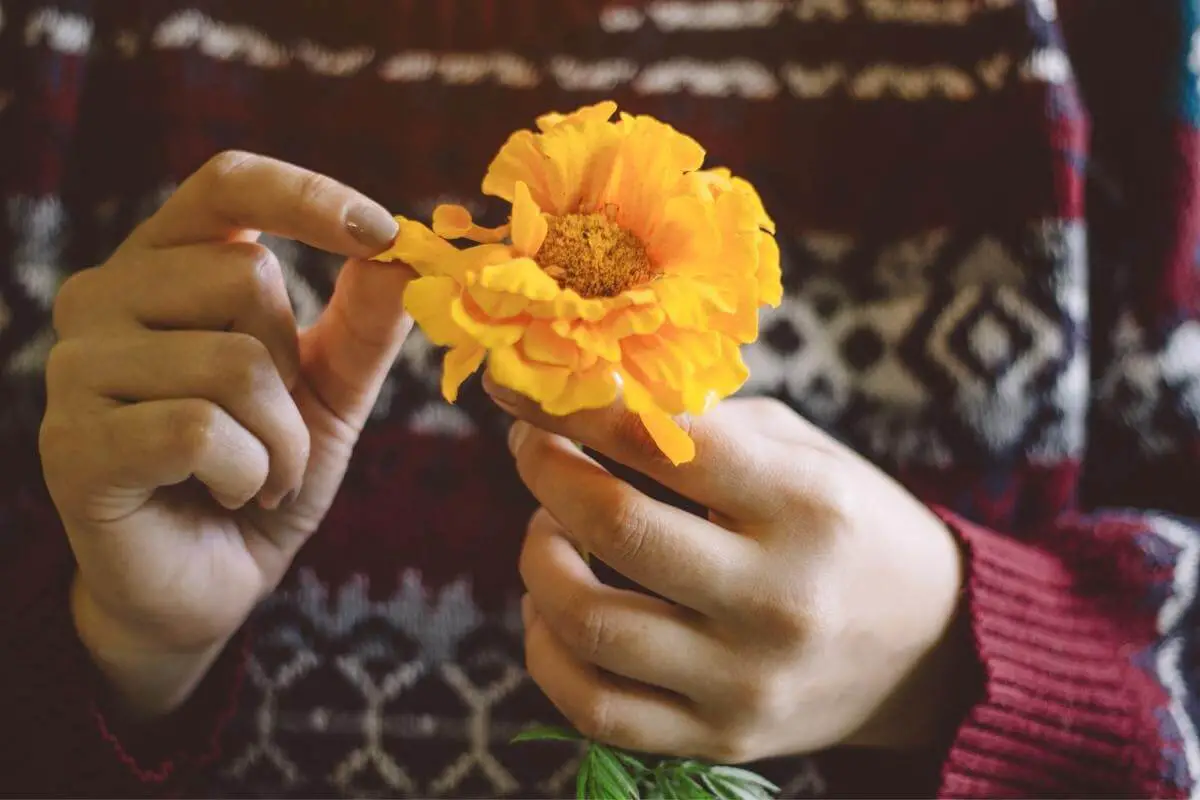Adding a few dozen marigolds to your garden will give it a lively feel and a vibrant charm.
Their bright yellow color is truly unique. Not to mention, they blossom into a wide range of forms and tones, adding variety to your landscape.
But how do marigolds and bees go together? Well, there are many ways to answer this question.
So, if you’ve been wondering if the marigolds in your backyard attract bees, continue reading to learn more!
Do Bees Like Marigolds?
The short answer is yes; marigolds do attract bees. And while the scent of marigolds isn’t that lovely to us, bees still look for marigolds when they need to pollinate plants.
In the case of marigolds, bees are drawn to them simply because of the scent and nectar; that’s how bees pick flowers in general.
So, the more attractive a flower’s scent is to bees, the more it’ll attract.

Understanding How Bees Pollinate
Bees require pollen as a food source for their offspring to survive.
When a bee lands at the top of a flower, it then collects pollen using the electrostatic forces in its hairs. This process is called pollination, and it’s very useful for the flowers in their seeding process.
But how do bees choose the best flowers for pollination?
Well, it’s not because of the smell or not the color which is what attracts us humans.
In fact, bees see the ultraviolet spectrum, and they can’t see the color red, but that doesn’t mean they won’t pollinate red flowers.
So, even if a flower looks and smells beautiful, this has little to no effect on whether it’d attract bees or not.
What really matters to bees is the nectar, which is the sweet liquid that bees suck when they’re pollinating flowers.
Marigolds May Repel Harmful Insects
There’s a common misconception that honeybees, wasps, and yellow jackets can be just classified as bees.
However, this is far from true since honeybees are useful, but the same can’t really be said for wasps and yellow jackets.
The presence of yellow jackets and wasps in your backyard is definitely a cause for alarm as these insects both sting. They also have a swarming behavior that can ruin your backyard picnics and barbeques.
The good news is that marigolds don’t attract yellow jackets or wasps. In fact, they can be repellent. The reason is that wasps and yellow jackets only look for other insects to eat and get their protein requirements.
These insects don’t go after scents like honeybees, so adding some marigolds to your backyard won’t make them flood it.
On a Side Note: Keep in mind that there’s no science-based theory that says marigolds will repel wasps or yellow jackets. But we can safely say that they won’t attract them.
How to Plant Marigolds?

To plant marigolds, follow these steps:
- Prepare the soil by digging down around 5-7 inches deep to loosen the soil and prepare it for planting
- Get rid of any stones or pebbles in the soil
- Make sure that the soil is full of nutrients by adding a slow-release fertilizer to it
- If adding fertilizer isn’t an option, you can water the plants with diluted liquid fertilizer as they begin to grow
- Moisten the soil
- Sprinkle the seeds roughly 1 inch apart and 1 inch deep
- Thin the seedlings while they’re still young
On a side note, keep in mind that only French marigolds should be planted from seed.
Otherwise, you’re better off buying African marigolds as young plants since planting them from seed will take an unnecessarily long time.
Oh, and if you’re using containers, soil-based potting mixes will generally work better for marigolds than other types.
Where to Put Marigolds in Your Garden?
Strategically planting your marigolds in your garden is essential to keep them healthy.
As a general rule of thumb, choosing a planting site that has maximum sunlight exposure would be ideal when planting your marigolds.
The reason is that marigolds thrive in direct sunlight, and they can easily survive in drought-like conditions as well.
Placing them in a shady area will get them covered in powdery mildew down the line.

Another thing to keep in mind is the soil.
Marigolds grow better in fertile soil with good drainage. However, it doesn’t have to be very fertile; in fact, medium-fertile would be great when growing marigolds.
Additionally, you should take into consideration the spacing between your marigolds.
For example, French and Signet marigolds should be placed 9 inches apart from one another, while African marigolds should be separated by an 11-inch distance.
Works Best: Also, if planting in containers, try to place marigolds as far apart from each other as possible since marigolds often get crowded when in containers.
Related Questions
What Plants Attract a Lot of Bees?
Bee balm, evening primrose, echinacea, hostas, snapdragon, and California poppies are some of the plants that attract the most bees.
This is because they have excellent nectar, making them ideal targets for bees. If your goal is to attract a lot of bees to your garden area these plants top the list.
What Should You Not Plant With Marigolds?
Marigolds go well with many types of plants, but they shouldn’t be planted with beans, cabbage, or beetles.
On the other hand, marigolds accelerate the growth of basil, tomatoes, cabbage, cucumbers, eggplant, broccoli, kale, squash, and potatoes.
Their golden lion heads also make a natural foil for other plants to grow and flourish.
What Repels Wasps but Not Bees?
Herbs work great for repelling wasps but not bees.
So, you can easily add some spearmint, citronella, thyme, or eucalyptus in your garden to prevent wasps and other harmful insects from infesting your backyard.
Final Words
So, do marigolds attract bees in your backyard?
Yes, but only the good ones, luckily. So don’t worry; wasps and yellow jackets won’t flood your backyard if you planted some marigolds; they don’t care about them.
So, if you’ve been thinking about recreating your backyard with some beautiful marigolds, by all means, go ahead!
You May Also Like
- Are Dragonflies Good for the Garden? (Pros and Cons)
- How to Attract Green Finches to Your Garden
- Do Praying Mantises Fly?
